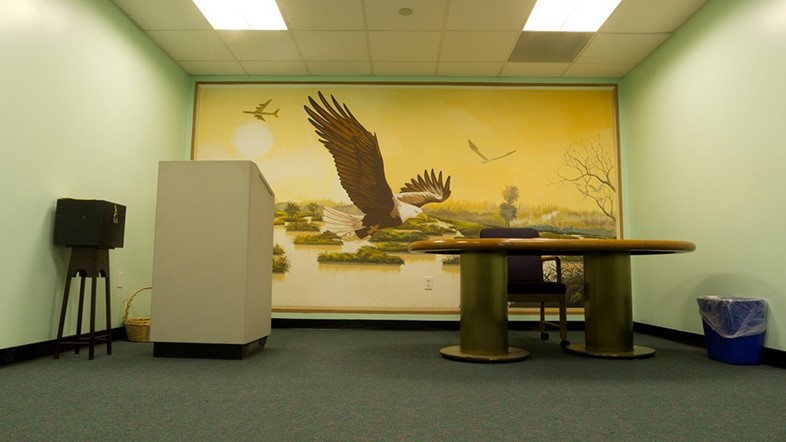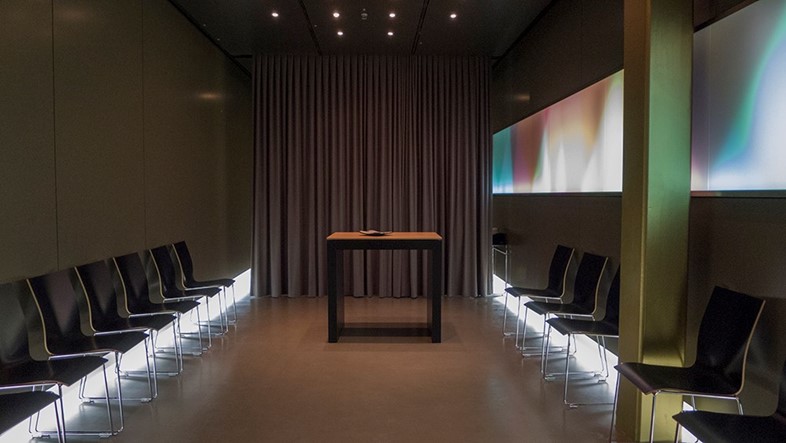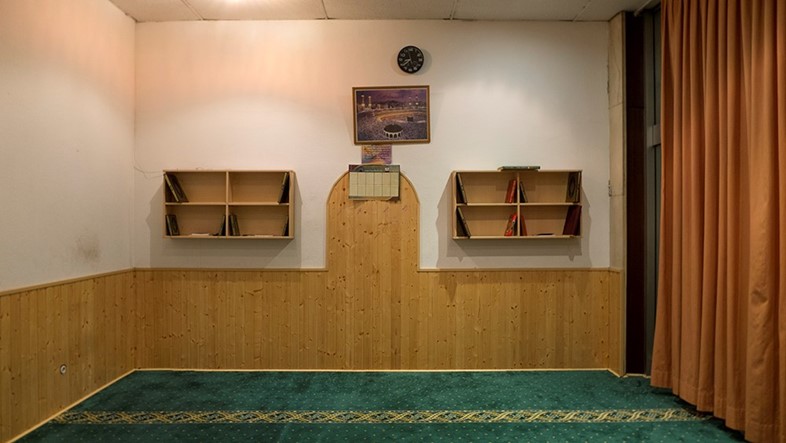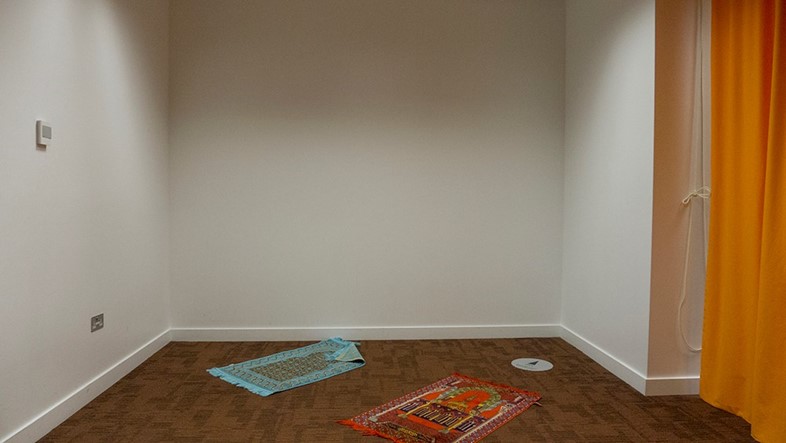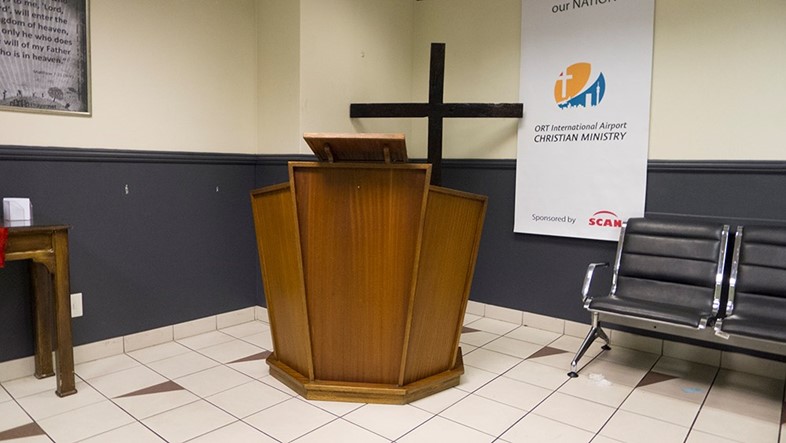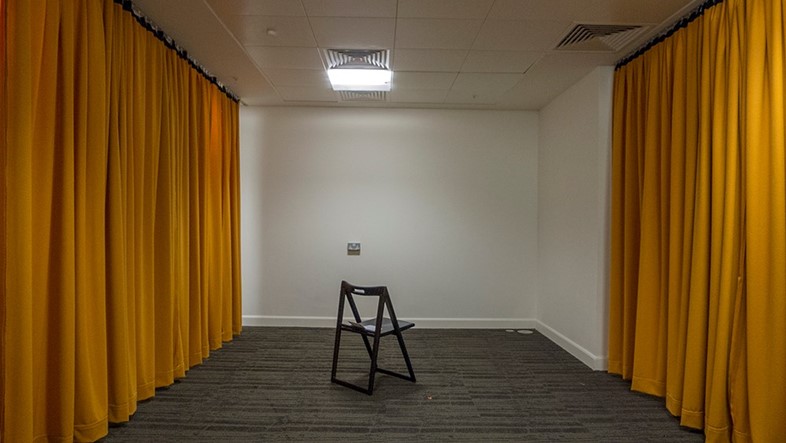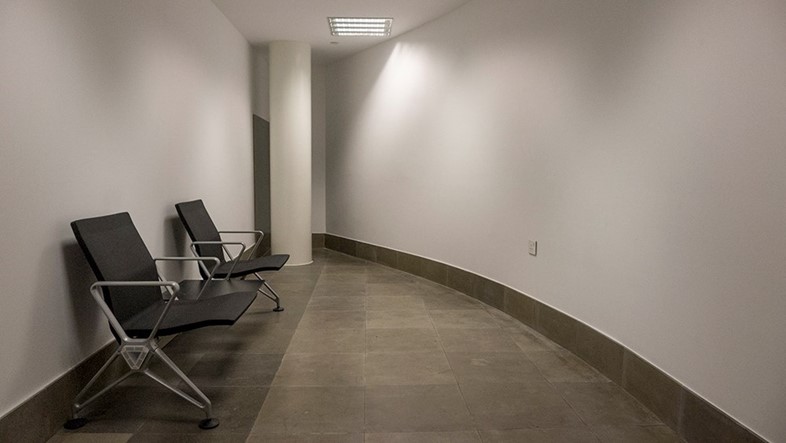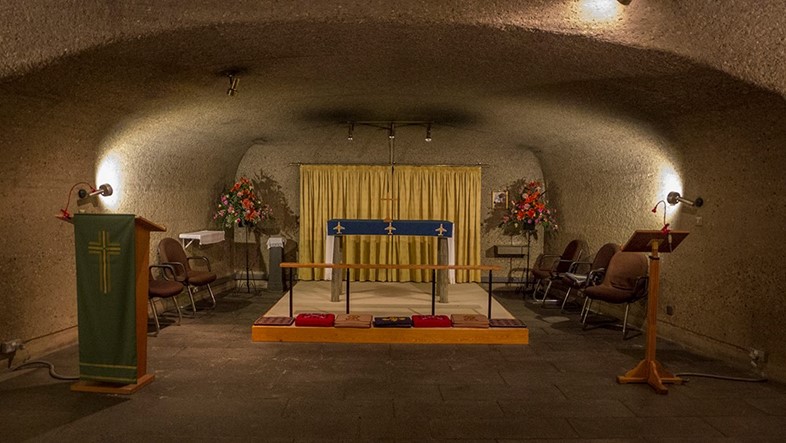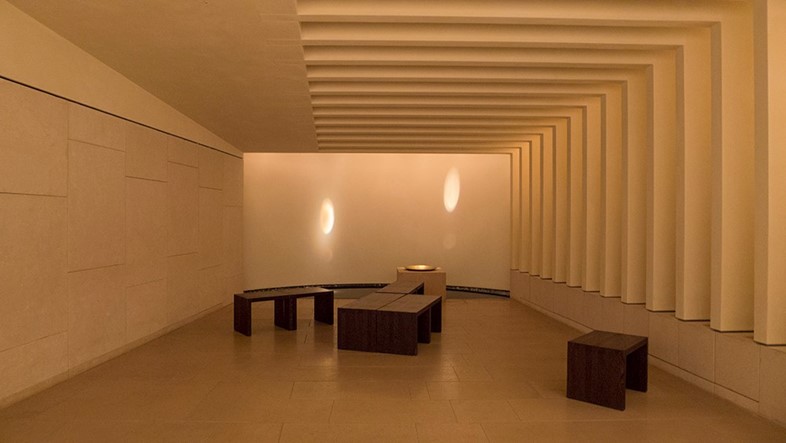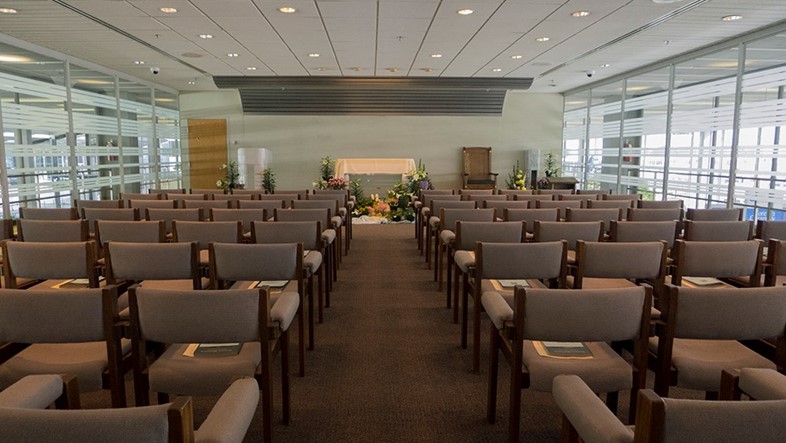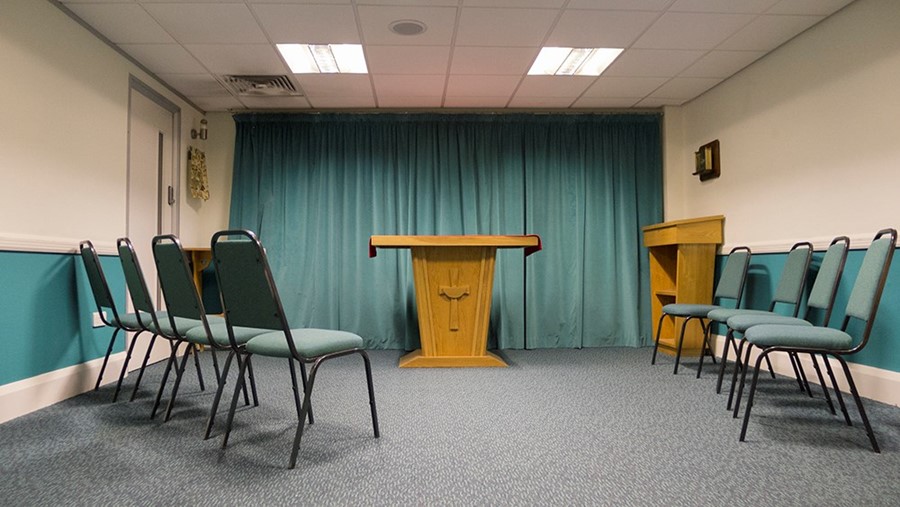Multimedia artist Leah Gordon has been photographing airport prayer spaces around the world for the past six years. She is interested in what constitutes a portal to the divine, and in search of an answer to that question she has shot religious rooms on visits to cities from Amsterdam and Edinburgh to Singapore and Johannesburg. “I check the airport ground-plan before I fly, so I know the locations of the prayer spaces before I arrive,” Gordon says. “The project often takes me off the main causeways of the retail outlets, and down odd service corridors to the less trodden corners of an airport. The darker spaces.”
Her ongoing project has grown into an ambitious archive of haunting yet intriguing places of worship, bringing overdue attention to meaningful spaces that often go underused. “The Christian spaces are nearly always empty except for in deeply Catholic countries, like the Philippines,” Gordon says, adding that she often wonders who gets the job to decorate, structure and curate each space. “I ask architects who would do this and they mostly say that, as an airport is so vast, perhaps a studio intern would get the job.”
Gordon mostly shoots at synagogues, chapels and mosques – except in San Francisco, which had a yoga space instead. “I normally use only film with medium-to-large format cameras, but I bought a small compact digital Leica for this project as I knew it would be impossible to apply for, and receive, permission to shoot in airports,” she says. Each prayer space differs in mood and aesthetic, and Gordon admits that the project is an exploration and deconstruction of her own prejudices. The atmosphere of her photographs changes completely when she finds a room occupied, rather than empty – as in one visit to a Muslim area, where she found a woman praying. “I was unsure about whether to go or stay, as it felt very invasive,” Gordon explains. “I just took one quick photograph, but at the same time I stood close to the door to watch. I soon realised that the physical actions of Muslim prayer are transformative. This utilitarian space was swiftly transformed into a charged and magical space.”
There’s something captivating about Gordon’s ever-growing archive, in which these interim spiritual hideaways serve as a powerful counterpoint to the rigid design of airport duty-free shops and food courts. “Airport prayer spaces feel incongruous in these temples of Modernism,” says Gordon, who describes these rooms as “small, pre-Enlightenment pockets of faith, frenzy, fear and doubt”.
